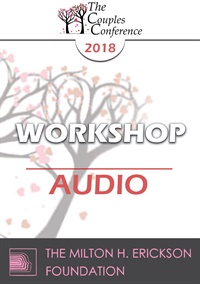CC18 Workshop 03 - Sex! - Stan Tatkin, PsyD, MFT
- Average Rating:
- Not yet rated
- Topic Areas:
- Sex and Sexuality | Workshops | Couples Therapy
- Categories:
- Couples Conference | Couples Conference 2018 | Pioneers in Couples and Family Therapy
- Faculty:
- Stan Tatkin, PsyD, MFT
- Duration:
- 1:59:07
- Format:
- Audio Only
- Original Program Date:
- May 04, 2018
- License:
- Never Expires.
Description
Description: This workshop explores sex as a core issue in couple therapy, emphasizing psychobiological and attachment-based frameworks. Tatkin presents bottom-up interviewing and assessment techniques that address implicit somatic responses, performance anxiety, and intimacy challenges. Clinicians learn to integrate neurobiology, arousal regulation, and attachment style into practical interventions for treating sexual dissatisfaction and dysfunction.
Syllabus Description: Perhaps the single most discussed issue in couple therapy is sex. This two-hour workshop will lead clinicians through a series of interviewing techniques for examining sexual problems in couples. These techniques include questions to ask, assessment of explicit and implicit somatic answers, and other strategic, bottom- up methods for getting to the crux of the matter. We will also cover typical difficulties many therapists have with frank sexual questioning. We’ll examine attach- ment organization, arousal regulation, and neurobiological issues surrounding sexual dysfunction and sexual dissatisfaction. Attendees will gain valuable information on how to uncover the psychobiological underpinnings of sexual concerns as well as interventions for working with sex in couple therapy.
Educational Objectives:
- List at least three sexual issues common to insecure avoidant partners.
- List at least three brain regions known to cause disturbances in sexual performance.
- Describe at least two interventions for working with sexual dissatisfaction among partners.
*Sessions may be edited for content and to preserve confidentiality*
Credits
Handouts
| Ericksonian Learning Snapshot (253.4 KB) | 2 Pages | Available after Purchase |
Faculty

Stan Tatkin, PsyD, MFT Related Seminars and Products
Stan Tatkin, PsyD, MFT, is a clinician, researcher, teacher, and developer of A Psychobiological Approach to Couple Therapy (PACT®). He has a clinical practice in Calabasas, CA, where he has specialized for the last 15 years in working with couples and individuals who wish to be in relationships. He and his wife, Tracey Boldemann-Tatkin, developed the PACT Institute for the purpose of training other psychotherapists to use this method in their clinical practice.


